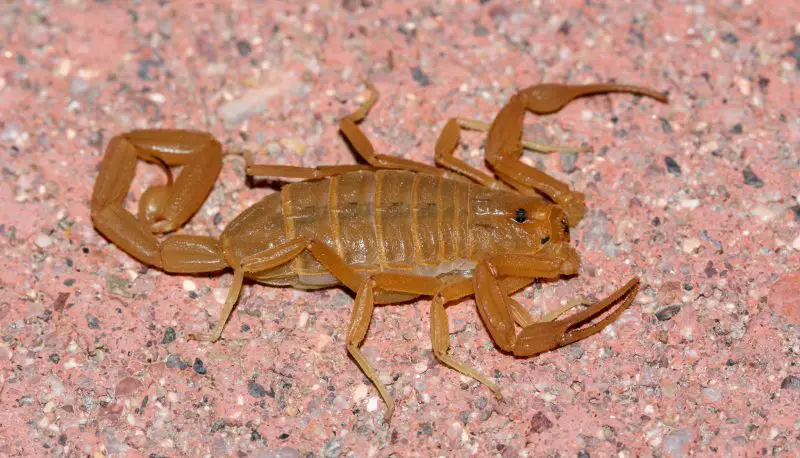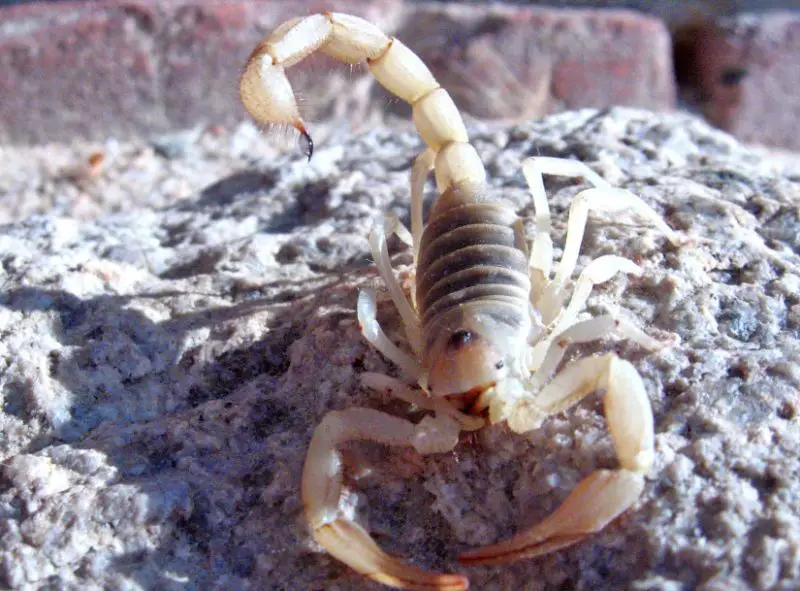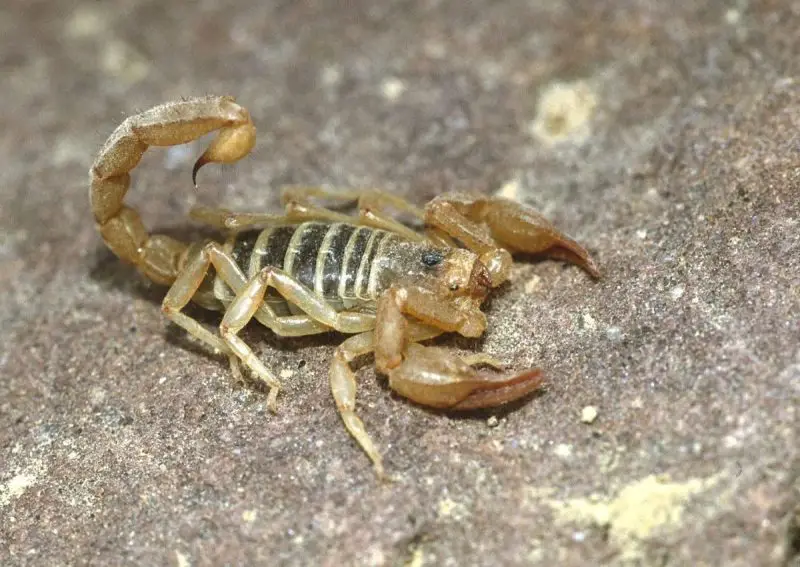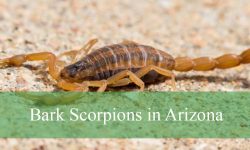Scorpions in Nevada are a familiar part of the landscape, especially in the southern desert areas such as Las Vegas and the Mojave region. The state’s hot, dry climate and rocky terrain create the perfect environment for several scorpion species to thrive. These creatures are often active at night and can sometimes be found near homes, gardens, or hiking trails.
This article highlights 5 common types of scorpions in Nevada, providing detailed identification tips, behavior patterns, and preferred habitats. Some species are harmless, while others—like the Arizona Bark Scorpion—can deliver a painful and medically significant sting. Recognizing each type can help reduce risks and improve your awareness when outdoors.
Learning more about scorpions in Nevada adds to your understanding of the local desert wildlife. With the right information, it’s easier to avoid unwanted encounters and appreciate how these unique arachnids fit into the state’s natural environment.
Common Scorpions Found in Nevada
Arizona Bark Scorpion (Centruroides sculpturatus)

The Arizona Bark Scorpion is the most venomous scorpion in North America and is found primarily in southern Nevada, particularly in areas like Las Vegas, Henderson, and Boulder City. This species is slender and light tan to yellow in color, with a tail that is thinner than most other scorpions. Adults usually measure between 2.5 to 3 inches in length. Unlike other scorpions, they often climb surfaces and can be found on walls, ceilings, and inside homes.
This scorpion is nocturnal and seeks out cool, dark places during the day, such as under rocks, tree bark, and debris. It becomes most active during the warmer months, especially from spring through early fall. Arizona Bark Scorpions are known to be social and may form communal groups when hiding during the day. Their sting is highly venomous and can cause intense pain, numbness, muscle twitching, and in rare cases, serious systemic reactions—particularly in children and the elderly.
In terms of diet, the Arizona Bark Scorpion feeds on small insects, spiders, and other arthropods. It uses its venom to paralyze prey before consuming it. Its ability to enter homes through small cracks and vents makes it one of the most problematic species for residents of southern Nevada. They are especially drawn to moist areas and are often found in bathrooms, laundry rooms, or under sinks.
This species thrives in desert environments but can also adapt to urban landscapes. It prefers low elevation desert areas with loose soil and access to both natural and artificial shelters. Their range in Nevada is largely confined to the Mojave Desert region, making southern Nevada their primary habitat within the state.
Striped Bark Scorpion (Centruroides vittatus)

The Striped Bark Scorpion is a medium-sized species that can be found in parts of southern and central Nevada, although it is more common in other southwestern states. This scorpion is easily identified by its pale yellow to tan body marked with two distinctive dark stripes running lengthwise down its back. Adults typically grow to about 2 to 3 inches in length. It has relatively thin pincers and a slender, curled tail.
This species is nocturnal and often hides under rocks, fallen logs, or leaf litter during the day. At night, it becomes active and hunts for small insects, spiders, and other invertebrates. The Striped Bark Scorpion is solitary and relies on ambush techniques to capture prey. Its sting, while painful, is not considered medically dangerous to humans, although it may cause localized swelling and discomfort.
Striped Bark Scorpions prefer semi-arid environments and are often found in grasslands, woodlands, and desert edges. In Nevada, they are less common than the Arizona Bark Scorpion but may still appear in drier, rockier regions in the southern part of the state. Unlike the Arizona Bark Scorpion, this species does not typically climb smooth surfaces and is less likely to enter homes.
Their preferred habitat includes loose soil and areas with ample ground cover, where they can dig shallow burrows or seek shelter under natural debris. Though their presence in Nevada is not as widespread, they are still occasionally encountered in suburban developments near desert environments.
Giant Desert Hairy Scorpion (Hadrurus arizonensis)

The Giant Desert Hairy Scorpion is the largest scorpion species in the United States and is native to the Mojave Desert, which covers southern Nevada. This impressive scorpion can grow up to 5 to 6 inches long and is notable for its dark upper body contrasted with pale yellow legs and sides. It is covered in fine hairs, giving it a “hairy” appearance that helps it detect vibrations in the soil.
Unlike the more venomous species, the sting of the Giant Desert Hairy Scorpion is relatively mild and generally not dangerous to humans. While it can deliver a painful jab, the symptoms are usually limited to local pain and slight swelling. Its size and strength make it an intimidating predator in its habitat, where it preys on insects, spiders, other scorpions, and even small lizards or mice.
This scorpion is primarily nocturnal and spends much of its time in deep burrows that it digs in sandy or loose soil. It comes out at night to hunt and patrol its territory. It prefers areas with little vegetation, including open desert landscapes and dry washes. Although it avoids human structures more than some other species, it may occasionally be found near homes on the desert edge.
In Nevada, the Giant Desert Hairy Scorpion is found throughout the southern desert regions, including around Las Vegas, Pahrump, and desert wilderness areas. It thrives in the hot, dry climate of the Mojave Desert and is well-adapted to extreme desert conditions.
Northern Scorpion (Paruroctonus boreus)

The Northern Scorpion is a small, secretive species that lives in the cooler, higher elevation regions of Nevada, including the Great Basin Desert and some mountain foothills. It typically measures between 1.5 to 2 inches long and is pale yellow to light brown in color, sometimes with darker markings near the tip of the tail. Unlike the larger desert scorpions, it is rarely seen and spends much of its life hidden.
This scorpion prefers rocky, semi-arid environments and can be found under stones, bark, or logs. It is adapted to cooler climates and is more active during spring and summer nights when temperatures are milder. The Northern Scorpion is reclusive and less aggressive than its desert relatives. Its sting is considered mild and usually results in minor irritation or swelling.
The diet of the Northern Scorpion consists of small insects and arthropods, which it captures using its pincers and venomous sting. It does not burrow as deeply as some larger scorpions but may use natural crevices and shallow soil depressions for shelter. This species is less commonly encountered due to its remote and elevated habitat.
In Nevada, it is found in central and northern parts of the state, especially at mid- to high-elevation deserts, rocky outcrops, and mountainous areas. Because of its cryptic behavior and low population density, sightings are rare and usually limited to areas that are undisturbed by human activity.
Yellow Ground Scorpion (Vaejovis confusus)

The Yellow Ground Scorpion is a small, pale yellow species that resides in the southern deserts of Nevada. It typically measures 1.5 to 2.5 inches long and is often mistaken for juvenile bark scorpions due to its similar coloring. However, it can be distinguished by its shorter pincers and stockier appearance. It is less agile than bark scorpions and tends to stay closer to the ground.
This scorpion is nocturnal and hides under rocks, wood, or debris during the heat of the day. At night, it emerges to hunt small insects and other arthropods. While its sting can be painful, it is not considered medically significant and usually only causes minor swelling and discomfort.
Yellow Ground Scorpions prefer arid, rocky environments with plenty of ground cover. In Nevada, they are most commonly found in southern parts of the state, including Clark County and nearby desert areas. Their tendency to stay close to the ground and avoid climbing makes them less likely to enter buildings compared to the Arizona Bark Scorpion.
This species is well-suited to the desert’s harsh conditions and plays a role in controlling insect populations in its environment. Though small and less conspicuous, the Yellow Ground Scorpion is a natural part of the Mojave Desert’s ecological community and may be seen by observant nighttime explorers.
When and Where to Find Scorpions in Nevada
Scorpions in Nevada are most active during the warmer months, typically from April through October, with peak activity in the hot summer nights. Being nocturnal creatures, they hide in cool, dark places during the day and come out after sunset to hunt and explore. Late evening and early nighttime hours are when scorpions are easiest to spot, especially if using a UV flashlight, which causes their exoskeleton to glow a greenish-blue color.
The highest concentrations of scorpions are found in southern Nevada, especially in and around Las Vegas, Henderson, and Boulder City. These areas fall within the Mojave Desert, which provides ideal conditions for species like the Arizona Bark Scorpion and the Giant Desert Hairy Scorpion. Scorpions also live in rocky foothills and deserts surrounding these urban zones, and may enter residential neighborhoods, particularly where landscaping includes rocks, woodpiles, or desert plants.
In central and northern Nevada, scorpions are less common but still present, especially in elevated, rocky environments such as those found in the Great Basin and mountainous regions. The Northern Scorpion, for example, prefers cooler, drier habitats and is typically seen in areas with natural cover like stones and brush. Wherever you are in Nevada, if the habitat is dry, warm, and provides shelter, scorpions can be present.
Safety Tips and What to Do if Stung
To prevent scorpion encounters at home, it’s important to reduce their access points and hiding places. Seal cracks and gaps in doors, windows, and foundation walls. Install tight-fitting door sweeps, cover floor drains, and use screens on windows. Keep the area around your home tidy—remove woodpiles, rocks, and thick ground cover, and avoid letting tree branches touch the roof or exterior walls. Indoors, shake out shoes, towels, and bedding before use, especially in summer.
When exploring outdoor areas, especially at night, wear closed-toe shoes and use a flashlight or UV light to scan your path. Avoid reaching into crevices or under rocks without checking first. If camping, carefully inspect sleeping areas and tents. Scorpions are not aggressive but may sting if threatened or trapped against the skin.
If stung by a scorpion, stay calm. Most stings are painful but not life-threatening. Wash the area with soap and water, apply a cold compress to reduce swelling, and take an over-the-counter pain reliever if needed. For severe symptoms such as difficulty breathing, muscle twitching, or numbness—especially in children, elderly individuals, or those allergic to insect venom—seek medical attention immediately. In cases involving the Arizona Bark Scorpion, professional care is strongly recommended, particularly if symptoms worsen rapidly.






